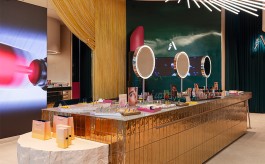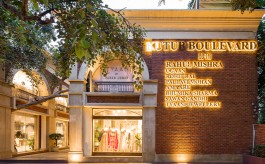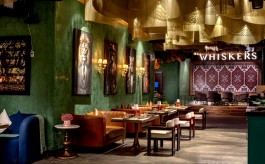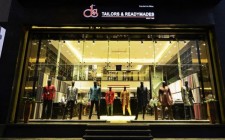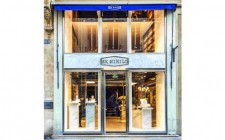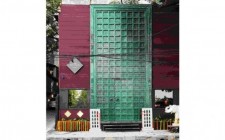How the Diva sells a look...
By Elke Moebius | Vjmedia Works | May 02, 2014
Lakme Diva now welcomes its customers to encounter the uniqueness of a space which does not sell itself as a space but rather as a series of experiences. It presents itself as a physical format of the idea that the way you look can be altered and taken to a new level, which would ultimately render a lasting feel good effect. Here's a look ....
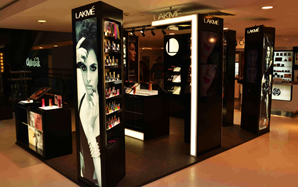 The Lakmé Diva welcomes its customers to encounter the uniqueness of a space which does not hard-sell, but rather delivers a series of calibrated experiences. The design presents itself as a physical manifestation of the idea that, the way you look can transcend to a whole new level, which would ultimately render a lasting feel-good effect. Here's a look ...
The Lakmé Diva welcomes its customers to encounter the uniqueness of a space which does not hard-sell, but rather delivers a series of calibrated experiences. The design presents itself as a physical manifestation of the idea that, the way you look can transcend to a whole new level, which would ultimately render a lasting feel-good effect. Here's a look ...We're in an age where experience is at the core of a lasting brand proposition. Lakmé Diva has taken this to a new level with its new project designed by Pune-based experience design studio, Figments Inc.
The gist of the project is to sell'looks' as an experience which contributes to one's identity. The looks are made possible through Lakmé's expertise and a diversified portfolio of skin enhancing products.
"There are two parameters on which a product is judged; one is its price and the other is its perceived value. There is a difference between both the terms. The perceived value of the product is what the Diva project contributes to establishing. When the price of the product agrees with the perceived value, the product sells. Here, even though it is the product being sold, for us the project falls under the service-segment. There are various ways of engaging the customer with the core being selling an experience with the product as a tool.,†says Jasleen, principal at Figments Inc.
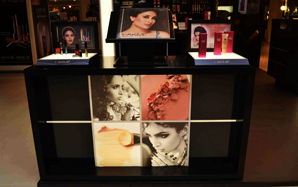 The experience proposition
The experience proposition Skincare and make-up (colours) are two distinct offerings from Lakmé. The project demonstrates how regimen followed using skincare products enhances the looks delivered by using colours. What colours suit a particular complexion is a matter of good taste and product know-how. In the Diva project, colours predominate and there is a process associated with how each product is used. That process is the selling point. The channels of visuals, tutorials and videos, do their part in educating the customer with all that the brand has to offer. But they still function at an impersonal level. The idea of collaborative buying is employed which hints at the personal touch. It is not a feature the brand markets separately , but is something that is woven seamlessly in the entire experience. This collaboration could be between the customer and a friend or the customer and the representative of the brand. The conversations held around the product experience create memories and establish positive or negative vibes which eventually lead to opinion formation and whether or not the customer would revisit the place. Collaborative buying works exceptionally well for a concept like this as it is quite specific to the target gender.
 The branding and design aesthetics
The branding and design aesthetics As for the design of the Diva project, a lot of background research went in. Lakmé's evolution from the 1950s was studied and the visual vocabulary was formulated. Key elements from the visual vocabulary were documented into an iconicity manual. These elements were tested to scale, before the design progressed further. The'L' logo was one of these elements, which helped reinforcing identity while contributing to the overall aesthetics. For the kind of experience it had to generate, aesthetics and technology had to be strongly integrated. Patterns like jalis were used, lighting was kept soothing and visuals which spell tonnes of styles were incorporated. Life size screens, back-lit translider as a laminate on the surface, skin scanners, touch-pads are some of the technologies used. Precise detailing ensured that these technologies are integrated in the design itself and not added on the top. The idea was to deliver a seamless design. Craftsmen at Naman In-store, were instrumental in bringing the detailing to life. Fine nuances are important when an experience such as this is staged. The light in which colours are seen is very crucial. Colour blocking is adopted for that purpose and the products are lit from the bottom.
Even though it is an island design, fluidity in navigation had to be incorporated for the experience to flow without any obstructions.
The imageries used are in two formats. Beauty KV( key visual) and product KV. The beauty KV are images of brand ambassadors donning the products which hints at how looks can mesmerize and takes the experience to a real world level. The product KVs personifies the products. In the users mind, these larger than life representation of the products goes a long way in distinguishing the product from its competitors.
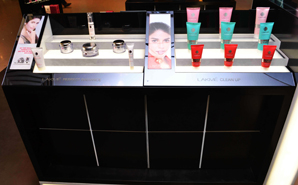 Levels of engagement
Levels of engagement So how is the experience delivered to the clients? Harsh Manrao from Figments. Inc says, "There are four aspects to it. First is the aesthetic construct which plays its part in drawing the customer. Then the experience moves on to the educational value where the customer is informed about the product range, its application methods, popularity etc. The positioning created till now leads to an aspirational value of the product as well as for the brand. It is then that the customer fully engages. It could be an active or passive engagement. This engagement for the short time the customer is in the zone, detaches her from reality and creates the hype around her looks which she is definitely very conscious of. These four aspects are experienced through different touch points of identification, creation and reinterpretation.â€
Summing up the project design details and what it entailed, The Diva is 100-150 sq. ft. island format which is 2, 3 or 4 side open. The Lakmé Diva, a cornerstone of the reinvent strategy, is a flagship experience platform for the brand. The Diva touchpoint will be present in key locations across Tier-1 & Tier-2 cities as shop-in-shop. Elements of the flagship experience get adapted in smaller formats, like front and back, window format and stand-alone podiums. The roll-outs for the smaller formats are over 1500 in number.
Well, this is an example that shows that looks can certainly bill! Especially when supported by an experiential offering that touches a chord and effectively taps the aspirational needs.
Advertisement

